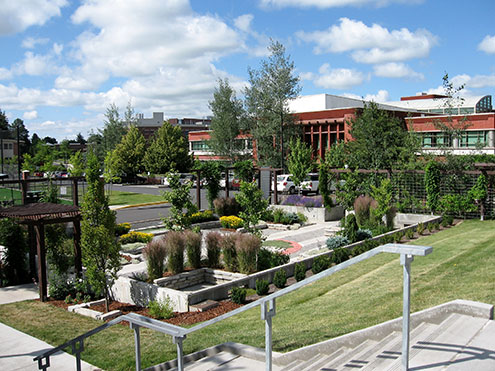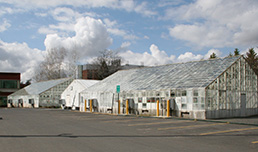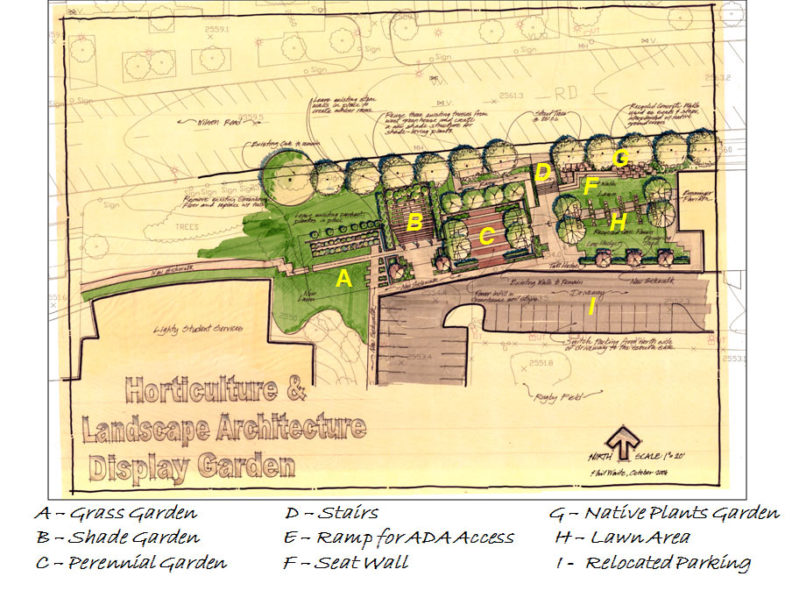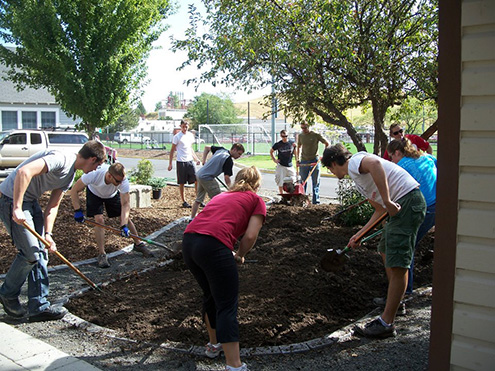
The Origins of the Display Garden
Thousands of students have passed through the old horticulture greenhouses on Wilson Road since they were built in 1951. In 2007, these greenhouses were torn down. At the suggestion of former WSU President V. Lane Rawlins, and following the conceptual plans of former WSU landscape architecture professor Phil Waite, the site of the old greenhouses was reborn as a Display Garden.

In spring 2008, Professor Waite and his students began designing and building the Display Garden. Traces of the old greenhouses were incorporated into the design to both preserve and serve as a reminder of the past.

Outdoor Rooms
The outdoor “rooms” of the Garden are partially defined by the foundation traces of the old greenhouses. The old greenhouse walls were also used to form rooms – one covered by a pergola (a shade structure).

The Display Garden design highlights the history of the previous users of the site. Alumni who worked or took classes in the greenhouses or students who designed and built the Garden have a place they can come back to. Current students, employees, and visitors now have an attractive and useful green space in an urban campus setting.
Sustainability of Resources and Place
Sustainability is the overarching concept behind the Display Garden. Students focused on sustainable design for each phase, keeping the old concrete walls of the original greenhouse to define the Garden’s perimeter, and reusing concrete from the greenhouse floors, as well as other building materials.
Plants were chosen for their adaptability to Washington’s growing conditions and for their ability to thrive on a minimum water and fertilizer. All plant material removed from the garden is recycled at the WSU compost facility and WSU compost is utilized in the planting beds, closing the sustainability loop.

Location of the Display Garden
The Display Garden is located on Wilson Road between the Lighty Student Services Building and Ensminger Pavilion, adjacent to the Grimes Way Playfield and across the street from Johnson Hall.
Display, demonstration, and research gardens
A display garden is permanent in character. It may display a specific design style or illustrate particular topics, such as sustainability or xeriscaping. A display garden is designed to look good all the time.
A demonstration garden proves that something is possible. For example, a variety of methods that can be used to protect environmentally-sensitive plants through Pullmans hot, dry summers and cold winters could be demonstrated.
A research garden explores what is possible. In this type of garden, several varieties of a particular plant would be planted in a specific experimental design, to evaluate their traits. In this design, it is expected that a number of plants may die, or that they may not be aesthetically pleasing. While these gardens are instructive, they are not show-worthy.